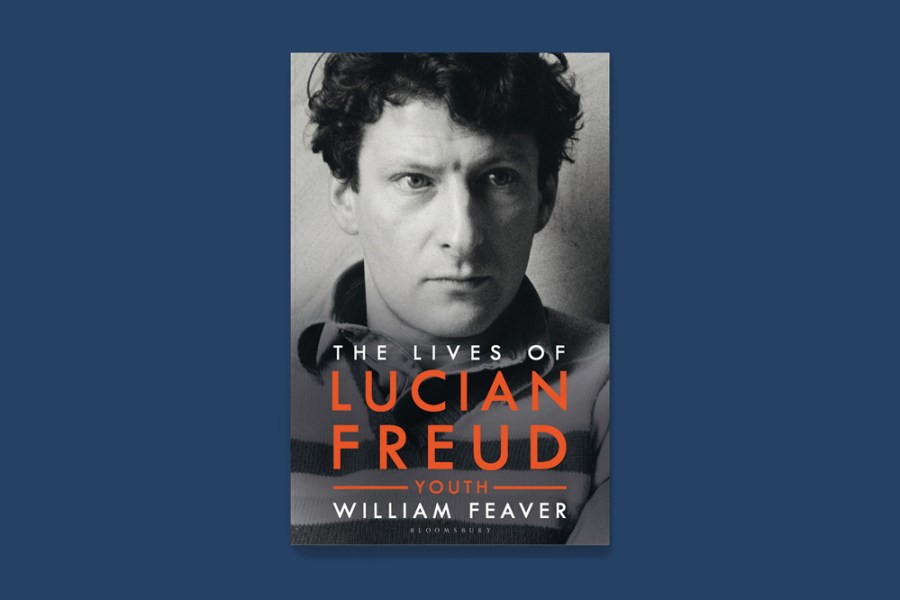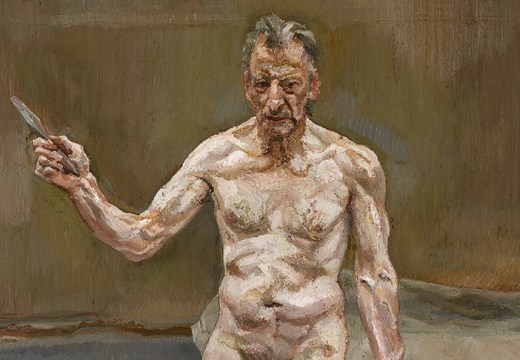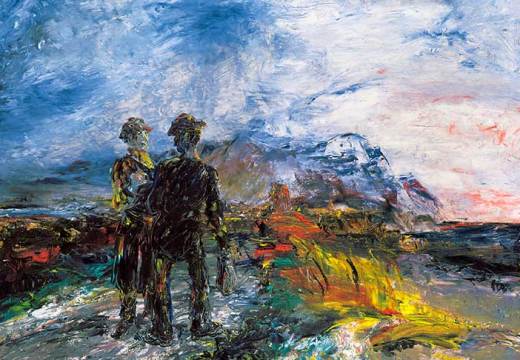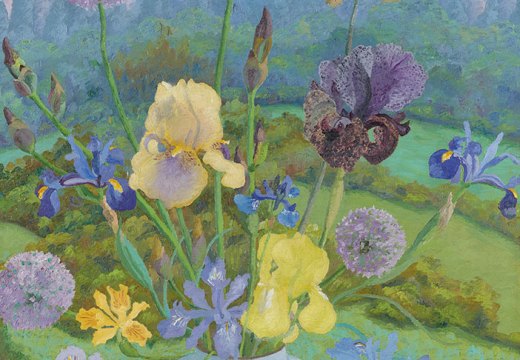He had a tendency towards violence. ‘He’d lead in, kicking out to left and right, and he’d clear the floor,’ said a friend. ‘He was a kicker.’ And that was only when he was dancing. In his childhood he beat up his younger brother and scrapped his way through school. In adulthood he was known to lash out, and wasn’t shy about using force in his pursuit of women. The question of what his grandfather, Sigmund, would have made of Lucian Freud is one that most readers of William Feaver’s biography will ask themselves at some point (in fact the only substantial contact between the pair came when Sigmund moved to London in 1938, a year before his death). It’s tempting to see Freud in terms of the barely unrestrained id. He was daring and capricious. He liked animals but particularly horses; riding them made him feel ‘three times more alive and powerful than normal’. He was also an astonishingly reckless driver who had his licence taken away repeatedly. All this, though, is in opposition to the way he worked. Paintings took months, sometimes years, to complete; famously, he insisted on direct, sustained scrutiny of his sitters (in the early days, finding them could be a problem). He discarded anything he thought to be unsatisfactory. He was the most careful of artists.
Feaver first met Freud in 1973 with the aim of writing about his work. Over the years he became the artist’s biographer and confidant, to the extent that Freud started referring enquirers to him, since he knew so much about his life. The Lives of Lucian Freud – at least this first half of it – is unusual in that perhaps a third of the book consists of Freud’s own words: he and Feaver spoke on the phone almost daily, and whole paragraphs are given over to the artist’s memories, anecdotes and opinions. It also contains names and dates, context, testimony from those who knew him, and so on. But in its cleaving to Freud’s perspective, giving the sense of a life being told as it was lived, the book puts its faith in the particular and the subjective, and in doing so comes close to embodying the spirit of Freud’s pictures.
Born in a wealthy area of Berlin in 1922, Freud was the middle child of three boys. He scorned authority from the start. ‘Told at his first school to tie shoelaces in a particular way,’ Feaver writes, ‘he promised himself: “I’ll never tie them that way again.”’ The family fled Germany and moved to England in 1933. Freud, with his bad temper and broken English, failed to settle in several schools. On impulse he went to study in 1939 with the idiosyncratic Cedric Morris, perhaps the closest he came to a formative education. It was also on impulse that he decided in 1941 to join the Merchant Navy. It was a harrowing three months. On the train home, travelling through green fields, having narrowly avoided a long conscription, he cried.
In Encounter magazine in 1953, in a rare piece of published writing, Freud wrote that the artist should achieve ‘a certain emotional distance from the subject […] A painter must think of everything he sees as being there entirely for his use and pleasure.’ He applied such tenets to his personal life as well. His almost total lack of sentimentality is striking. An early friendship with Stephen Spender resulted in a sketchbook filled with poems and drawings; later, Freud ripped the poems out. For a while he and John Craxton were inseparable, but any affection Freud might have once felt for him is barely acknowledged. Much has already been written about Freud’s relationships with women – two brief marriages and numerous, often overlapping affairs, conducted frequently to the ignorance of the other women and resulting in countless children – but it’s still startling to read of his disdain for the mechanics of conventional human attachment.
It was his disdain for convention that enabled him to persist with a style of figurative painting that became more and more unfashionable as the century progressed. What may at first have seemed a schoolboyish desire to shock – forensically detailed pictures of dead animals, say – was the juvenile stage of a lifelong commitment to originality, something much harder to achieve when his artistic choices made novelty unavailable to him. The one major stylistic shift of his career came about in the 1950s, partly as a result of his friendship with Francis Bacon, a figure even less interested in maintaining decorum than he was (and one with whom he shared both a gambling habit and sexual promiscuity). Bacon’s work, with its emphasis on paint carrying the form, was felt by Freud as a challenge to his own exactitude, even if the scope of his portraits went beyond Bacon’s ‘narrow range of panic stations’ (one of Feaver’s many fine phrases); he began to stand up while working and took to using larger, hogshair brushes for a greater variety of strokes. Woman Smiling (1958–59), ‘a venture into animated expression’, as Feaver calls it, marked the beginning of the mature style.
Feaver is brilliant on the art. His analysis, like Freud’s work, represents a thorough refusal of the generalised and the glibly intellectual; as he says of Still Life with Chelsea Buns (1942), ‘this is a clear account of actual things to hand enabling the imagination to take hold’. His writing is original and lively, if occasionally a little knowing. It’s also infused with a waspishness reminiscent of his subject. To see the world through Lucian Freud’s eyes is to see it acutely but not charitably. For someone who painted portraits of such depth, Freud’s stories reveal little interest in other people’s hinterlands; he can also be something of a name-dropper (it’s interesting to learn that he repeatedly tinkered with his entry in Who’s Who). What kind of inquisitor was Feaver? How far was he prepared to push Freud? Such questions sit at the back of the reader’s mind. Regardless, this is a formidable achievement; pages and passages merit rereading for the richness of detail and perceptive commentary. ‘The picture in order to move us must never merely remind us of life, but must acquire a life of its own,’ Freud wrote in Encounter. His biographer has successfully followed a similar principle.
The Lives of Lucian Freud: Youth 1922–1968 by William Feaver is published by Bloomsbury.
From the February 2020 issue of Apollo. Preview and subscribe here.
Unlimited access from just $16 every 3 months
Subscribe to get unlimited and exclusive access to the top art stories, interviews and exhibition reviews.














![Masterpiece [Re]discovery 2022. Photo: Ben Fisher Photography, courtesy of Masterpiece London](http://www.apollo-magazine.com/wp-content/uploads/2022/07/MPL2022_4263.jpg)
It’s time for the government of London to return to its rightful home